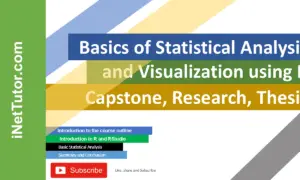Application of Decision Support System to Equipment Monitoring
Introduction
Technology is a collection of techniques, methods or processes used in
Producing goods and rendering services .The accomplishment of almost all of the tasks now can be achieved through the application of technology evident in laptops, cellular phones, computers, software, hardware, and things that can make one’s work easier. Nowadays you can classify things as “Hi-Tech” meaning the role of technology gets better bringing efficiency and accuracy to end of a process facilitated by technology.
Today’s technology provides advance reporting and business analysis
to help the user gain a deeper understanding of business performance, customer preferences, and market trends. The executives and business managers can access performance metrics and analytical reports and the use this information to work together to set or redesign a strategy.
A decision support system (DSS) is a computer program application that analyzes business data and presents it so that users can make business decisions more easily. It is an “informational application” (to distinguish it from an “operational application” that collects the data in the course of normal business operation). A decision support system may present information graphically and may include an expert system or artificial intelligence (AI). It may be aimed at business executives or some other group of knowledge workers.
Model-Driven Decision Support System
A model-driven DSS provides access to and manipulation of a quantitative model. DSS built using simple algebraic models provide the most elementary level of functionality. In general, model-driven DSS use more complex models, e.g., accounting, optimization and simulation, to provide decision support.
In most implementations, model-driven DSS use the data and parameters provided by a decision maker to help in analyzing a situation. Model-driven DSS do not usually require large historical databases. Model-driven DSS are used to assist in formulating alternatives, analyzing impacts of alternatives, and interpreting and selecting appropriate options.
Tasks that have been supported with model-driven DSS include crew deployment, job scheduling, advertising allocation, forecasting product usage, cost estimation and pricing, tax planning and investment analysis.
What-if Analysis
The process of determining the effects on outcomes in a statistical model through systematic changes in the input. For example, in the budgeting process, man factors, such as future tax rates, interest rates, inflation rates, employee count, expenses, are variable to the extent that they can deviate from expected values.
It is also good in giving choices or options for budget allocation which has two options: average, it will give the exact amount of fund to be allocated in a certain business unit; and, above-average, it will give an amount with excess because of some uncertainty or risk regarding the budget.
Entity-Relationship Diagram
Entity-relationship diagram (ERD) is a type of conceptual data model or semantic data model.It is used to describe the type of information that is to be stored in a database during the requirements analysis. The proponents used this data modeling technique to describe the classifications of each entity and their relationships.
Data-Flow Diagram
A data flow diagram (DFD) is a graphical representation of the “flow” of data through an information system. A data flow diagram can also be used for the visualization of data processing. With the use of the data flow diagram, the proponents can visualize the data processing of the proposed system.
Testing
Once the system is implemented in machine executable form, it must be tested. The user will test the system if it satisfies the requirements of the system. The developers should ensure the accuracy and efficiency of the system to determine the uncovered errors in function in logic in implementation and if it needs improvement.
Summary
In this chapter the developed system showed its major composition the (1) system features and (2) functionalities. The developers evaluated the developed system by using different testing methods. The developers used unit testing to test specific pieces of codes, to verify the particular component created or modified functions as designed, integration testing, to test the correct inter-operation of multiple subsystem, validation testing to test the feature or the use if it is correctly implemented and system testing to fully exercise the computer based system. All the necessary experimentations and treatments were applied to determine the speed, accurate, functionality, and overall rating and efficiency of the developed system.
The developers also conducted survey from the IT and Non-IT officers from the contents and user friendliness of the system up to its visual appearance and asked for their comments to improve the system
